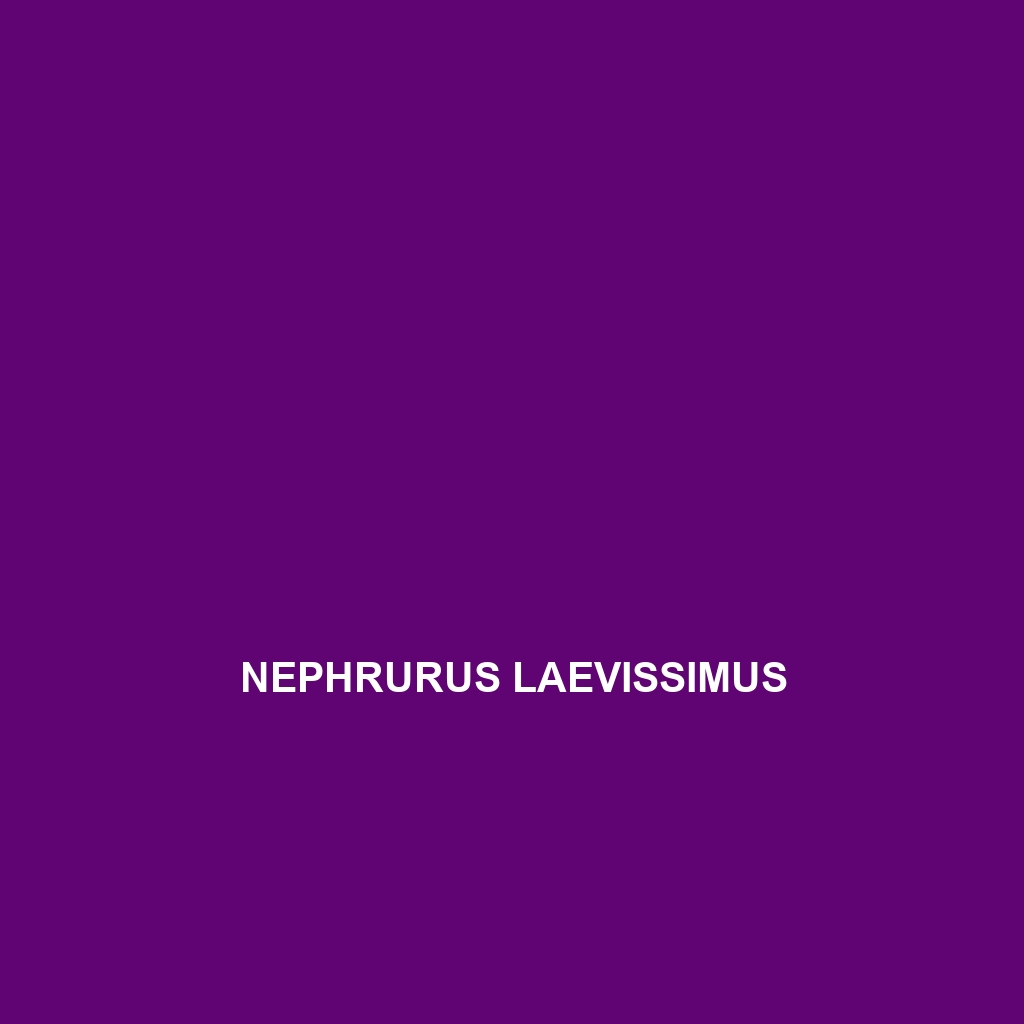Common Name
Nephrurus laevissimus
Scientific Name
Nephrurus laevissimus
Habitat
The Nephrurus laevissimus, commonly known as the smooth knob-tailed gecko, primarily inhabits the arid and semi-arid regions of Australia. This species thrives in sandy desert environments, spinifex grasslands, and sparse woodlands, typically associated with warm climates. These habitats provide the necessary cover and heat that Nephrurus laevissimus requires for thermoregulation. While they largely prefer sandy soils to facilitate burrowing, they can also be found in more open savanna ecosystems, where ample ground cover exists. The temperature and humidity levels in these habitats play a crucial role in their daily activities and ecological interactions.
Physical Characteristics
The smooth knob-tailed gecko is notably distinguished by its unique tail shape, which resembles a knob or bulb. Adults typically reach lengths of 10 to 20 cm (4 to 8 inches). The coloration of Nephrurus laevissimus varies from sandy beige to light brown, often adorned with darker spots or bands that provide effective camouflage against their desert surroundings. Their smooth, granular skin is specially adapted to reduce water loss, allowing them to survive in their harsh environment. Additionally, their stout bodies and large, wedge-shaped heads assist in their burrowing lifestyle, enabling them to dig into loose substrates with ease.
Behavior
Nephrurus laevissimus exhibits primarily nocturnal behavior, emerging at night to hunt and forage. Their lifestyle is characterized by a mix of ambush predation and active foraging, as they hunt insects and other small prey under the cloak of darkness. During the day, they retreat into burrows or seek shelter under rocks or logs to avoid the extreme heat. Their social interactions are limited, with territorial behaviors observed among males during the breeding season, often leading to displays of aggression or courtship rituals that involve head bobbing and tail waving to attract females.
Diet
Nephrurus laevissimus is primarily insectivorous, feeding on a variety of arthropods, including crickets, beetles, and mealworms. Their diet can also include small vertebrates and other invertebrates, highlighting their adaptability as opportunistic feeders. They hunt using both vision and olfactory cues to locate prey. This species utilizes a sit-and-wait strategy, remaining motionless until prey comes close enough to be captured swiftly. Their feeding patterns showcase a reliance on the availability of prey in their environment, which can fluctuate based on seasonal changes.
Reproduction
The reproductive cycle of Nephrurus laevissimus typically begins during the warmer months, when males engage in competition for territory and access to females. Mating usually occurs in late spring to early summer. After a gestation period of approximately 4 to 6 weeks, females lay 2 to 4 eggs in a hidden location, preferably in loose substrate or under cover. The hatchlings emerge after about 60 days, fully independent and mimicking the adult’s coloration for optimal camouflage. Parental care is absent, with the young geckos must immediately fend for themselves.
Conservation Status
The conservation status of Nephrurus laevissimus is currently listed as Least Concern by the International Union for Conservation of Nature (IUCN). While this species is not facing immediate threats, habitat destruction due to agriculture, urbanization, and climate change poses potential risks. Efforts to monitor populations and preserve their natural habitats are crucial to maintaining their numbers. Continued research is necessary to understand any population declines better and the effects of environmental changes on their survival.
Interesting Facts
One captivating fact about Nephrurus laevissimus is its remarkable ability to shed its tail as a defense mechanism against predators. This process, known as autotomy, allows them to escape while the detached tail continues to move, distracting the threat. Additionally, their unique knob-shaped tail serves not only as a defense mechanism but also as a fat storage organ, enabling them to survive in nutrient-scarce environments. The smooth knob-tailed gecko’s adaptation to arid conditions showcases the incredible evolutionary strategies of reptiles.
Role in Ecosystem
Nephrurus laevissimus plays a significant role in its ecosystem as both a predator and prey species. As nocturnal insectivores, they help control insect populations, contributing to the ecological balance within their habitat. Their burrowing behaviors can improve soil aeration and contribute to nutrient cycling. Additionally, they serve as a food source for larger predators, thus integrating into the food web. Maintaining healthy populations of smooth knob-tailed geckos is essential for the overall health of their ecological community.
